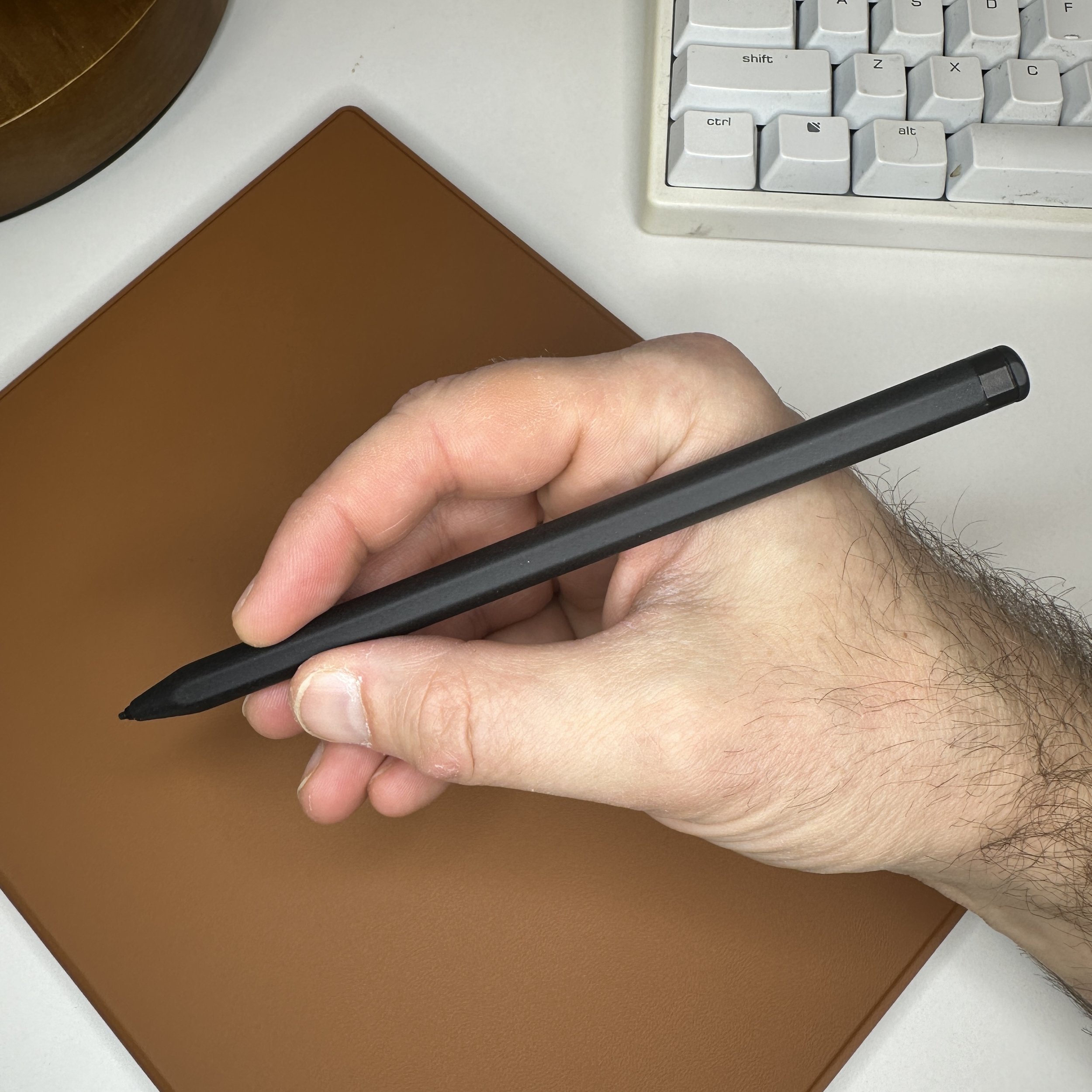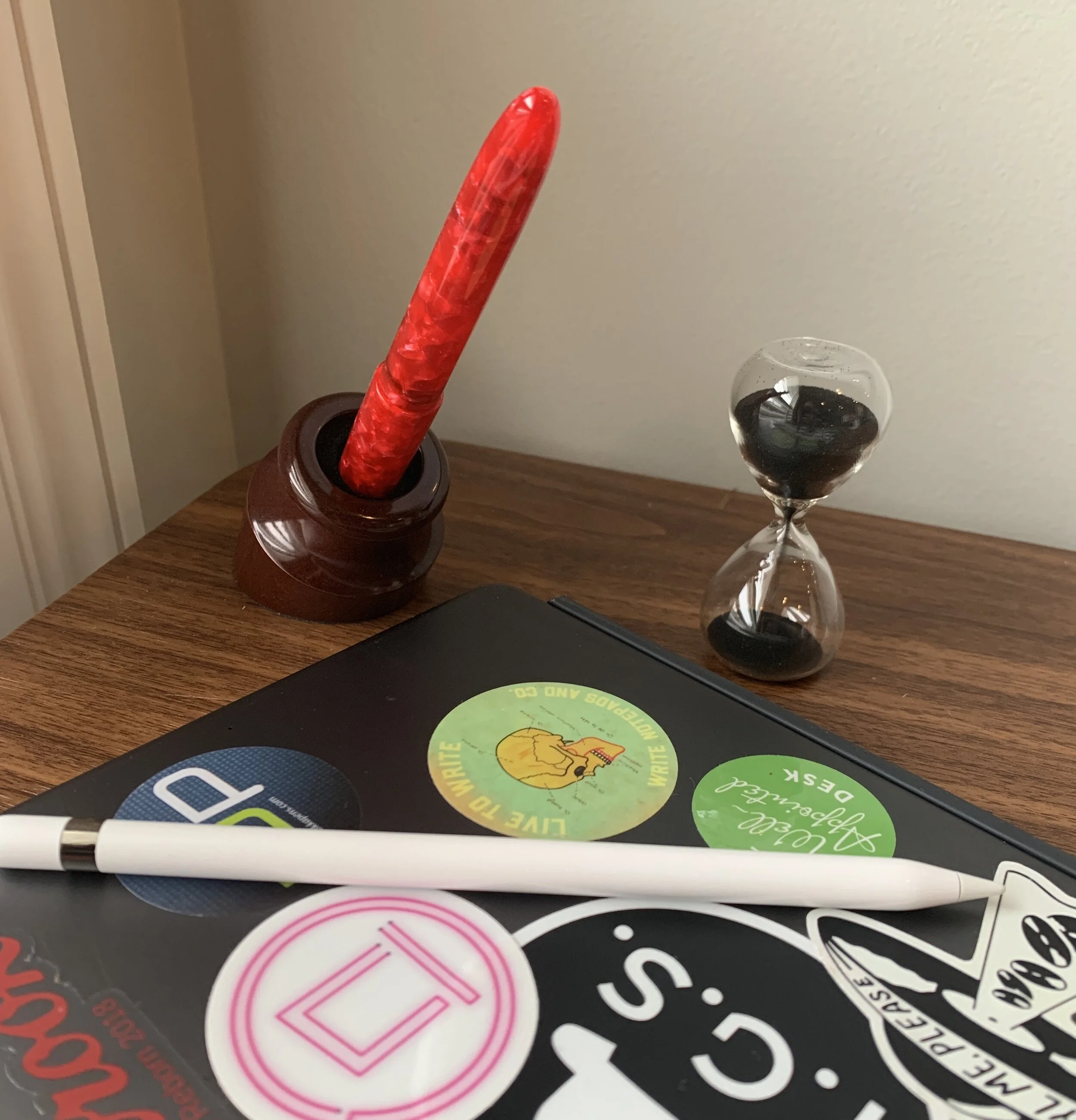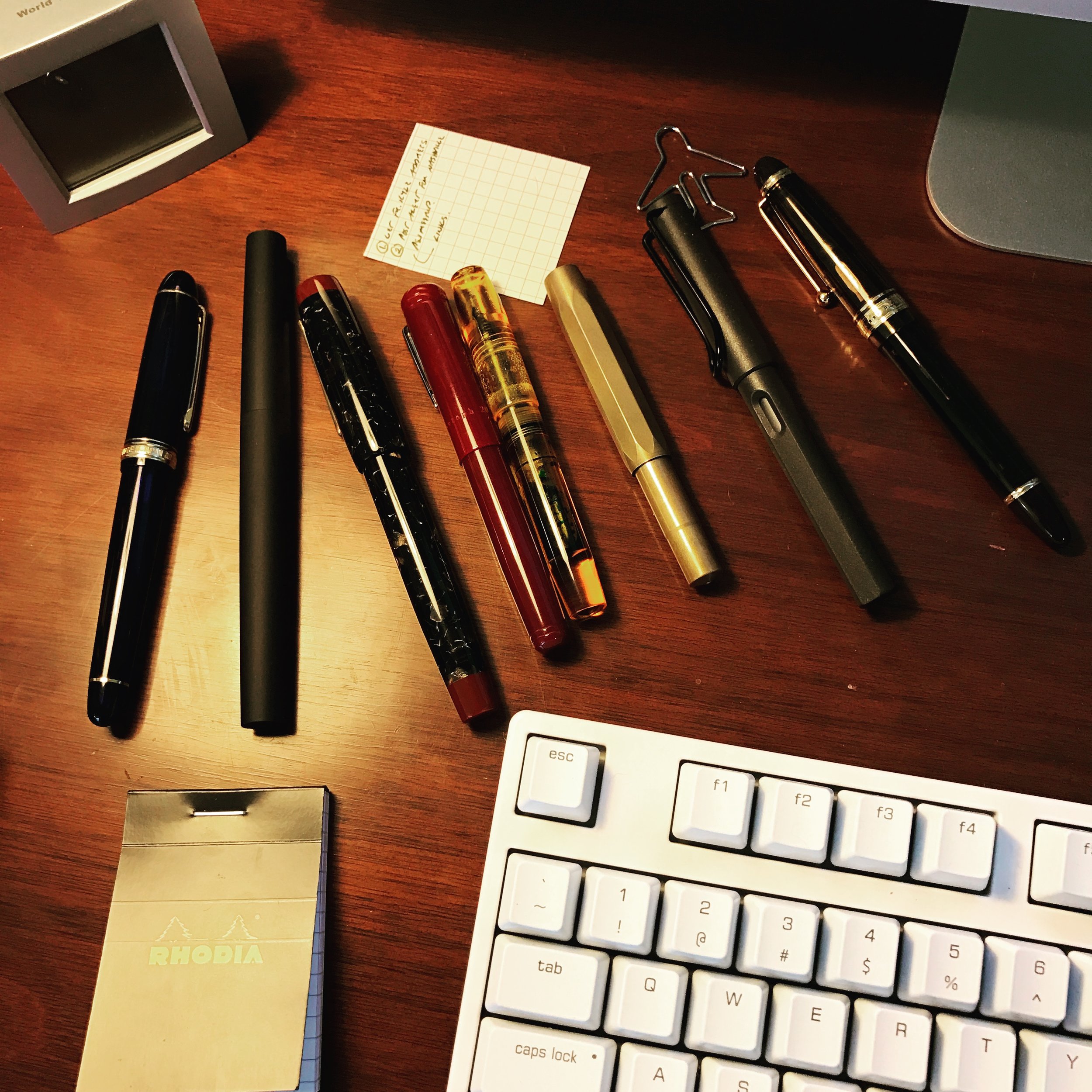I have a love-hate relationship with so-called “digital paper”, both the idea and the reality. I've owned some version of Apple's iPad Pro for years, but stopped upgrading it after a while due to general disuse. While it occasionally comes in handy when I need to sign something electronically, mark up a longer document for my day job, or where a hand markup needs to be easily distributed to a wider group via e-mail, I otherwise find the writing experience on the iPad to be (1) far less satisfying than writing on real paper due to the lack of a tactile experience; and (2) subject to the same distractions as a computer, to the point where it's much harder to lose yourself in the work than with a notebook and a pen.
But I'm a reader, researcher, and notetaker by nature, so I’ve continued to experiment. I accumulate a LOT of paper, and the idea behind a digital writing device still intrigues me. I'm not opposed to digital tools where they are the best option and solve a real need, such as minimizing the volume of "junk paper" I generate, and anything that streamlines the process of organizing and archiving handwritten notes is a plus.
To that end, I acquired two e-ink devices last year, Amazon's Kindle Scribe and the Remarkable 2 e-ink tablet. While I can't say that I've fully bought in to either system, both devices pleasantly surprised me with the extent to which they duplicate, physically and mentally, the experience of writing on paper. While I originally sought to write a single comprehensive post discussing my thoughts on e-ink and these devices as a whole, I quickly realized that such a piece would quickly get too long and unwieldy, so I'm going to break it out into multiple installments. First up: my thoughts on the physical writing experience, including available pen options.
Writing on both the Kindle and Remarkable 2 feels more like actual paper than the iPad. The matte screens simply feel better than writing on glass. While the friction requires you to periodically replace the tip of the stylus as it wears down, replacements are generally inexpensive. (As an aside, I have tried the Paperlike screen protector for the iPad, and still prefer the feel of both e-ink tablets.)
The pens/styli I have used are more comfortable to use for longer writing sessions than the Apple Pencil. Of the two "stock" options available, I actually prefer the Kindle Scribe Premium Pen ($59.99) over the much more expensive Remarkable Marker Plus ($129). Recently, I've been using aftermarket options, including the Lamy EMR AL-Star and the Lamy Safari "Twin Pen" (a multi pen that also includes a D1 ballpoint refill for when you want to switch writing modes). All of these options use Wacom's EMR (Electromagnetic Resonance) technology - no batteries are involved, so you don't have the battery anxiety that can be an issue with the Apple Pencil during a long working session or if you forget to charge it.
I find the writing experience nearly as distraction-free as physical paper. Personal experience may vary, but I can "lose myself" in reading and writing with an e-ink tablet in a way that I've never experienced with an iPad. Whether it's due to digital distraction always being a click away, blue light, or something else, I don't know, but that's the reality.
The Remarkable 2 allows you to choose from a variety of line options, and vary both style and width. EMR technology is responsive to pressure, creating line variation that corresponds to light/heavy writing pressure. You will also see the “color option” I discuss below.
EMR pens feature different nib sizes - this is the round tip on the Lamy AL-Star.
For those who want to write a finer line (or who want to write on “glossy surfaces”, such as a Samsung device), Lamy makes a pointier nib. It will likely wear down quicker on matte surfaces.
The standard Remarkable and Kindle styli both feel very much like a pencil. I prefer their weight and balance to that of the Apple Pencil.
Potential Drawbacks To Consider
While there is very little latency ("lag") in the current generation of e-ink tablets, it's still there. I've not found it to interfere with my enjoyment of the overall experience, and I would describe it as “minimal” with both the Scribe and the Remarkable 2.
The lack of a color display limits the ability to highlight and annotate documents in different colors. While the settings do allow you to change colors, you'll only be able to view color in exported documents, not on the device. (I know you can change colors with the Remarkable 2 - I've not tried on the Kindle Scribe as Amazon's software makes it fairly difficult/inconvenient to import and organize PDFs and other documents for annotation purposes so I generally don’t use it that way. More on that in a later installment.) Other companies have recently released tablets with color e-ink screens, but they are expensive (i.e., approaching $700).
Some might find the technology expensive for a single use device. That said, with as much as I read and write (hours per day), $300 for the tablet doesn't strike me as outrageous. Remarkable-branded accessories can be pricey and raise the price of the device to around $600 if you opt for the most expensive pen and folio, but if all you want is a simple no-keyboard folio cover and a Wacom-compatible pen, there are much less expensive generic options out there that don’t compromise the experience.
So What's Still to Come?
In addition to recommitting to a journaling habit, one of my goals for 2024 is to be a bit more systematic in how I use paper, and especially in how I organize notes so that I'm able to locate them for reference later. I've been using the Remarkable 2 as both a digital notebook and e-reader (mainly for articles that I want to highlight and annotate in pdf form), with the Kindle Scribe as my primary reading device for longer books that I can annotate yet don't want to carry with me when I'm traveling. Both devices allow me to export markups to my computer for archiving.
The Remarkable 2 software syncs your handwritten notes with the desktop app, and has functions that include handwriting conversion and the ability to type annotations directly into the document from your computer. I’ll go into the functionality in more depth at a later date, but you can export the documents in PDF form to save elsewhere or distribute to others as necessary.
At some point I will do more in-depth installments on the ins and outs of each tablet, including my thoughts on the software and any friction points encountered while integrating these devices into a workflow. To that end, if you're considering purchasing an e-ink tablet, I would carefully consider how you want to use it before making a decision. If you're essentially looking for an e-reader with a large screen that you can use to make handwritten notes and highlights, and use occasionally as a digital notebook, the Kindle Scribe gives you access to Amazon's large library (including Kindle book you already own) with basic e-ink notebook functionality. On most Kindle books the handwriting function is generally limited to "sticky notes" (picture below), but this is already changing as Amazon tweaks their software, and “write anywhere” books are being made available in the Kindle Store. At the moment, the Remarkable 2 has more out-of-the-box functionality and a more intuitive interface, allowing you to read (and annotate) DRM-free e-books, PDFs, and online articles sent to the Remarkable via a Chrome extension. If you spring for the (pricey) keyboard cover, you even can turn the Remarkable 2 into an e-ink typwriter similar to a Freewrite. For those whose primary goal is notetaking and handwriting, I would recommend starting with the Remarkable or something like it.*
As with standard Kindle highlights and typed notes, Amazon allows you to export a pdf of your notes and annotations.
*Note: I recognize other options are available. I know many people who enjoy their Supernote and Boox tablets, but I'm not currently interested in the ability to add Android apps and I otherwise don't see enough of a difference in the handwriting functionality to convince me to buy another device.
This post does not contain affiliate links. TGS is supported via purchases from the T.G.S. Curated Shop and pledges via the T.G.S. Patreon Program. If you enjoyed this content, please consider supporting us!


